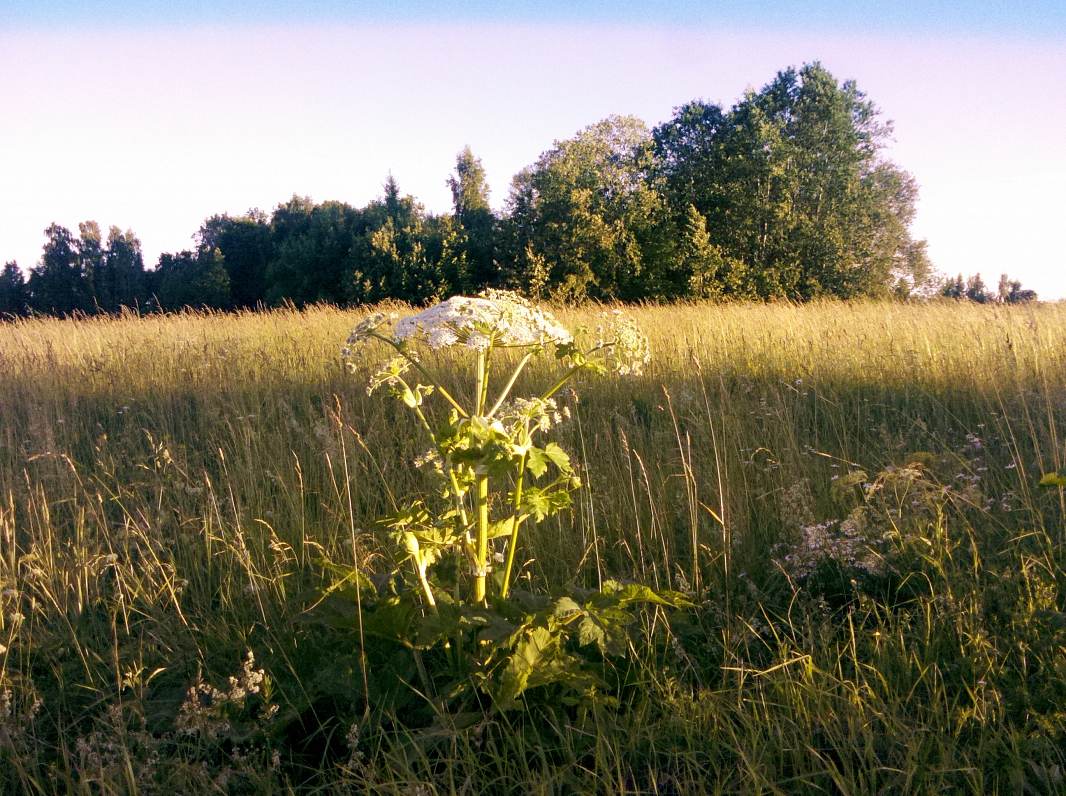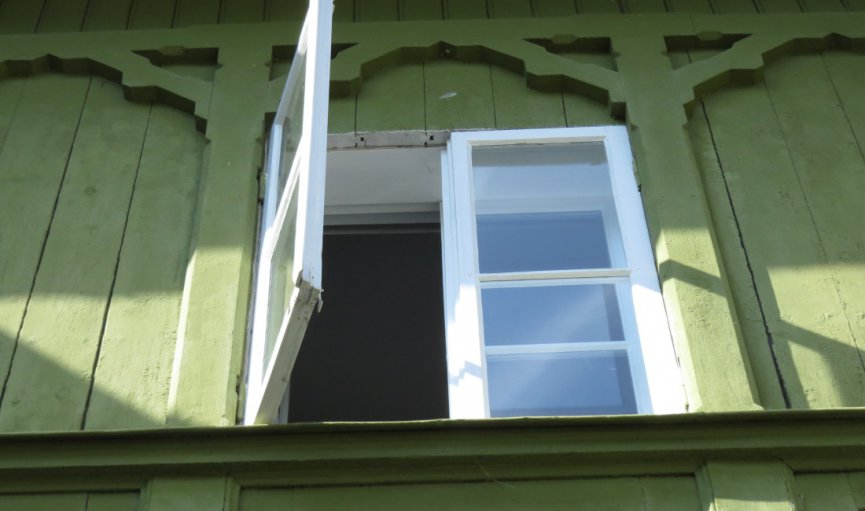Latvānis is a significant phenomenon, and not just because it is an almost-anagram of 'Latvians'. Known in English as 'Giant Hogweed' or in Latin as 'Heracleum mantegazzianum' it is an ubiquitous sight in the countryside at this time of year, particularly in the north and east of the country. Take a train from Riga to Valka up on the Estonian border and the tracks are lined with the distinctive forms of Latvānis sentries making sure no-one can hop the train.
Growing sometimes two meters tall or more, the plants look like giant lampshades designed by Phillipe Starck. They were not indigenous to Latvia but were introduced from central Asia as fodder for cattle by the Soviets. Like those who brought them, they decided to take over the country and have shown considerably more staying power in pursuing that ambition.
It is true that a fully-formed Latvānis plant has a futuristic architectural elegance to it. For this reason the misguided and the insane have on occasion voluntarily introduced them to their gardens, thus condemning themselves to years of hopeless toil in preventing their subsequent spread.
The main problem with Latvānis plants, apart from their extreme invasiveness is their toxicity - phototoxicity to be precise. The clear, water-resembling juice inside their stems can cause hideous skin burns that last years and reappear when exposed to light. Mention Latvānis to almost any country-dwelling Latvian and they will pull up a sleeve, a skirt or a trouser leg and display evidence of their own encounter with the plant. If you are unlucky they will also regale you with gruesome tales of people suffering far worse fates.
For my own part, I have developed a strange relationship with Latvānis. After finding some huge examples on part of my property I have waged a four-year campaign to eradicate them using all the methods recommended to me by self-styled experts: regular cutting, pouring salt or gasoline down the stalks, turning the area into an inferno, sticking a spike into the root system. All failed miserably.
Because the toxin reacts with light, you are best off dealing with Latvānis at night by moonlight, says another piece of country lore, which adds something even more eerie to their reputation, as if they are something summoned at a witches' Sabbath. But it's easier said than done to see what you are doing if you have ever stood in the middle of a jungle of these vicious Triffids at midnight.
The only thing that works, in my experience, is digging them up, one at a time, while kitted out in full protective gear worthy of a biological warfare cleanup unit. The roots go deep and resemble parsnips. It's backbreaking, laborious work. Unless you get the full root out, it'll be back. And whatever you do, don't let it get to flower: a single plant can produce thousands of seeds that can remain dormant for up to seven years.
So now I'm in the situation in which I have successfully banished Latvānis from my land while watching it creep closer and closer, along the railway line, across the meadows, across adjacent properties that only bother to send a tractor to mow their fields once a year. Every year there are a few more, closing in, inexorable, unstoppable.
Yet despite the certainty that I will soon be fighting Latvānis again on all fronts like Robinson Crusoe battling the cannibals from inside his stockade, I have developed a sort of grudging admiration for the plant. I think of Latvānis the way Montgomery thought of Rommel: a dangerous, persistent and resourceful foe who must be eliminated at all costs.
































